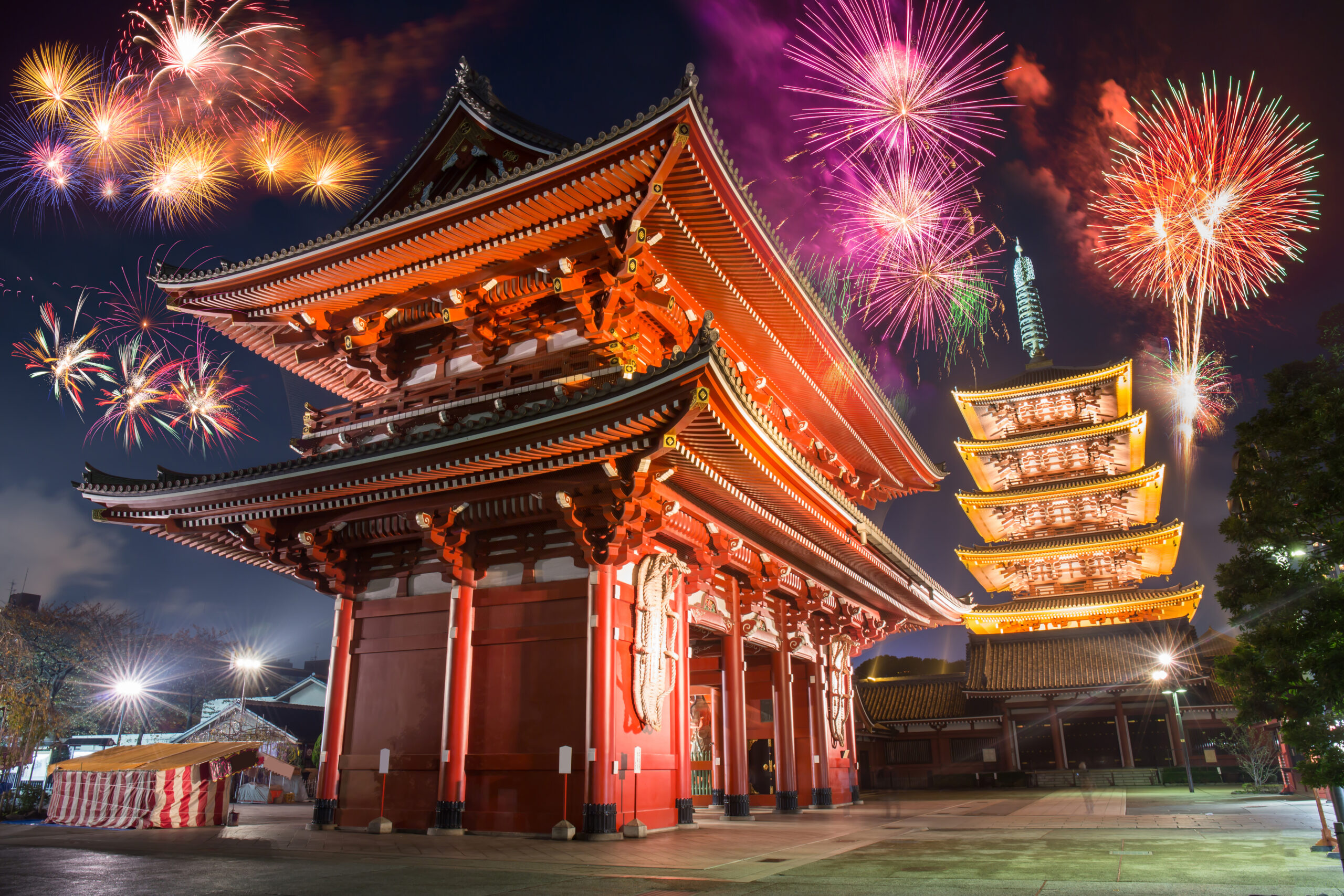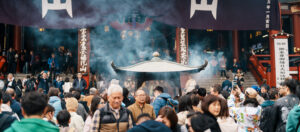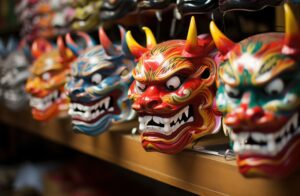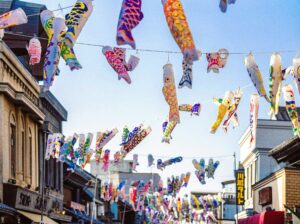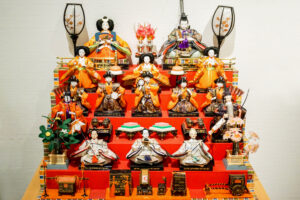As the calendar page turns to January 1st, Japan welcomes the New Year, or "Oshogatsu," with a blend of solemn traditions, joyous celebrations, and unique customs that are steeped in centuries of culture and history. Unlike the loud and boisterous countdown parties found in many Western countries, Japan’s approach to ringing in the New Year is a harmonious combination of reflection, renewal, and familial warmth. From ringing temple bells to savoring special meals and visiting shrines, each custom holds a special significance in heralding the upcoming year with hopes of happiness, health, and prosperity. Join us as we explore the distinctive ways Japan celebrates this auspicious occasion.
Joyous Beginnings: New Year in Japan
The New Year, or Oshogatsu, is arguably the most important holiday in Japan, celebrated with an array of customs that trace back to both Shinto and Buddhist traditions. As the old year fades and the new one dawns, Japanese people engage in numerous practices and rituals aimed at sweeping away the ills of the past and welcoming a fresh start. It’s a time when families gather, often returning to their ancestral homes, to spend the holiday period together in warmth and unity. The atmosphere is filled with joy and anticipation, as each tradition and activity is imbued with meaning and significance, marking the commencement of a year filled with promise.
Exploring Oshogatsu: Japan’s New Year Festivities
Oshogatsu is celebrated from January 1st to 3rd, enveloping Japan in a festive mood with streets and homes adorned with special decorations like kadomatsu (bamboo and pine decorations) and shimenawa (sacred Shinto straw ropes). Businesses and schools close, allowing everyone to partake in the festivities and traditions that have been passed down through generations. The air is filled with the scent of pine and the sounds of laughter and joy, as people engage in various activities, from playing traditional games to preparing and enjoying customary foods. It’s a period when the hustle and bustile of everyday life pauses, allowing for a reflective and auspicious start to the year.
The First Bell: Joya no Kane Tradition
One of the most solemn and reverberating traditions of the New Year in Japan is the "Joya no Kane," the ringing of the temple bells 108 times at midnight on December 31st. This Buddhist practice symbolizes the expulsion of 108 worldly desires believed to cause human suffering. Each ring resonates through the cold winter air, purifying the soul and welcoming the New Year with a clean slate. The deep, sonorous tones of the bells create a moment of introspection and hope, as people across the nation pause to reflect on the year gone by and the one that lies ahead.
Savoring Osechi: A Culinary New Year Tradition
Osechi-ryori is a traditional New Year’s meal that is both a feast for the eyes and a celebration of the palate. These special dishes are prepared in advance and packed in jubako boxes, resembling bento boxes but reserved for this special occasion. Each component of Osechi carries a specific meaning, from shrimp that symbolize longevity to black beans for health. Eating Osechi is a delicious way to partake in centuries-old culinary traditions and imbue the New Year with various hopes and wishes for the future. It’s not just a meal; it’s an edible mosaic of Japan’s cultural and gastronomic heritage.
Hatsumode: First Shrine Visit of the Year
Hatsumode is the first shrine or temple visit of the year, a tradition that millions of Japanese participate in. People flock to these spiritual sites, braving the cold and sometimes queues, to pray for good fortune, health, and success in the coming year. The air at these places is charged with an electrifying sense of faith and hope, mingled with the smoke of incense. Stalls selling talismans, omamori (amulets), and ema (wooden plaques for wishes) are ubiquitous, adding to the festive atmosphere. Hatsumode is a profound communal experience, symbolizing a collective hope and wish for the future.
Embracing the Sunrise: Greeting the New Year
On New Year’s Day, many Japanese participate in "Hatsuhinode," the tradition of watching the first sunrise of the year. It is believed that Toshigami, the deity of the New Year, appears with the rising sun, bringing with it happiness and renewal. Families and friends gather at beaches, mountains, or buildings with a good view of the horizon to witness this awe-inspiring moment. The first rays of sunlight are greeted with cheers and joy, as people bask in the glow of a new beginning. This beautiful tradition embodies the hope and optimism that the New Year brings.
Toshikoshi Soba: Slurping into the New Year
On New Year’s Eve, many Japanese partake in the tradition of eating Toshikoshi Soba, or "year-crossing noodle." This custom is rooted in the belief that the long noodles symbolize longevity and the hope for a long and prosperous life. The act of eating soba also signifies letting go of the hardships of the past year, as the noodles are easily cut while eating. This simple yet profound meal is enjoyed in the company of family and friends, serving as a reminder of the joys and sorrows shared and overcome together.
Kagami Biraki: Breaking Open the New Year
Kagami Biraki, which translates to “opening the mirror,” is a ceremony typically held on the second Saturday of January. This tradition involves breaking open a barrel of sake in celebration of the New Year. The round shape of the mochi and the lid of the sake barrel symbolizes harmony and togetherness. It is an occasion for family, friends, and communities to gather and share in the joy and spirit of the season, signifying a wish for happiness and prosperity in the year to come.
Fukuwarai: Laughter in the New Year
Fukuwarai is a traditional Japanese game played during the New Year festivities, akin to "Pin the Tail on the Donkey." Participants are blindfolded and asked to place parts of a face (eyes, eyebrows, a mouth, etc.) onto a blank face on a paper mat. The result is often a humorous, distorted face that brings laughter and joy to the participants. This game, typically played in a convivial family setting, symbolizes the importance of laughter and happiness in the New Year, reminding everyone that joy and lightheartedness are crucial for a fulfilling life.
Otoshidama: The Gift of New Year’s Joy
Otoshidama is a cherished New Year custom where children receive money in special decorative envelopes called "pochibukuro" from their parents, relatives, and sometimes close acquaintances. The amount varies, but the gesture is a symbolic wish for the child’s health, happiness, and prosperity. Otoshidama is eagerly anticipated by children and is a significant part of the New Year celebrations, embodying the spirit of giving and the bonds of family.
The Emperor’s New Year Greeting: A Royal Tradition
A unique and highly anticipated event is the Emperor’s New Year greeting. On January 2nd, the Japanese Emperor and the Imperial Family make several public appearances at the Imperial Palace. Crowds of people gather to see the Emperor and to listen to his message of peace and goodwill for the New Year. This tradition reinforces the cultural importance of the Imperial Family in Japan and provides an opportunity for the people to feel a connection to their history and heritage.
Shishi-mai: Lion Dances that Usher in Good Fortune
The Shishi-mai, or lion dance, is performed across Japan during New Year’s celebrations to bring good luck and drive away evil spirits. Dancers, donned in elaborate lion costumes, move to the rhythm of drums and flutes, visiting houses and businesses. The lion bites the heads of spectators, particularly children, which is believed to bring health and good fortune. This vibrant and energetic performance is a highlight of New Year festivities, showcasing Japan’s rich cultural traditions and the community’s hopes for a prosperous year ahead.
As the New Year unfolds, Japan’s unique and varied celebrations offer a glimpse into a culture that deeply honors its past while joyously celebrating the present and looking forward to the future. From the solemn ringing of temple bells to joyous meals with family and laughter-filled games, each tradition carries with it a message of hope, renewal, and community. As the world watches the first sunrise of the year, Japan reminds us of the beauty in reflection, the strength in unity, and the endless possibilities that lie in the year ahead.
